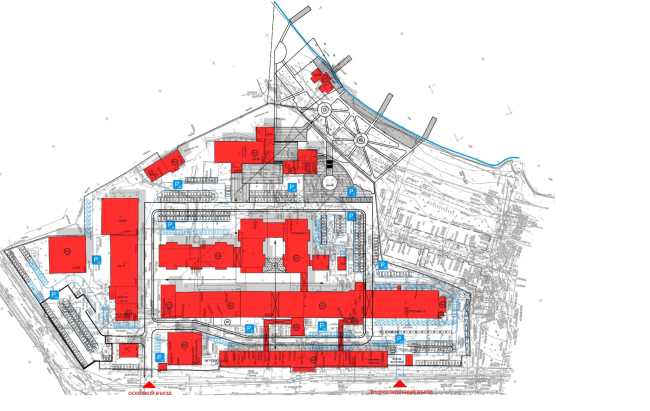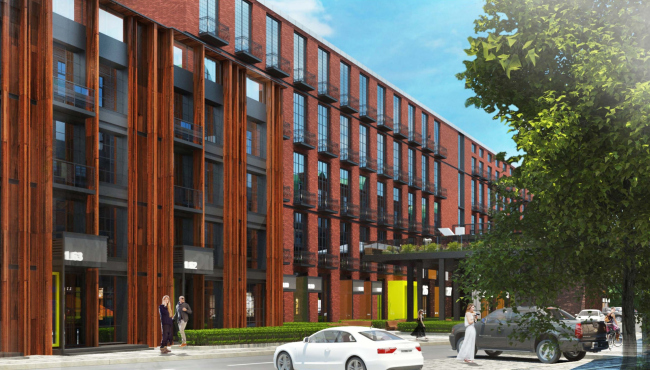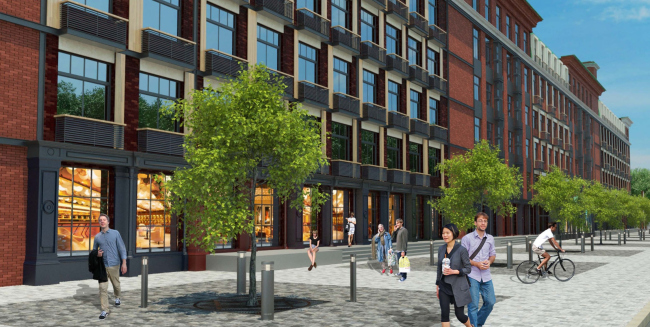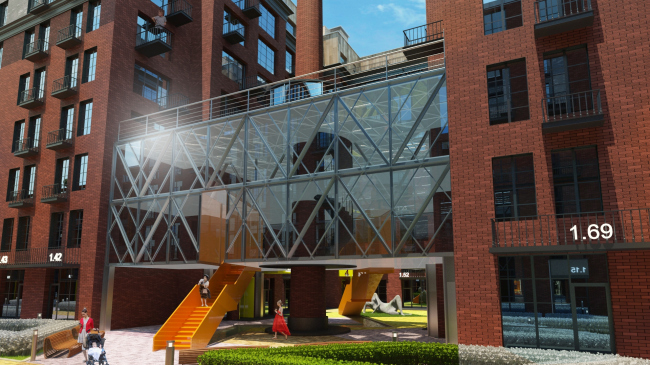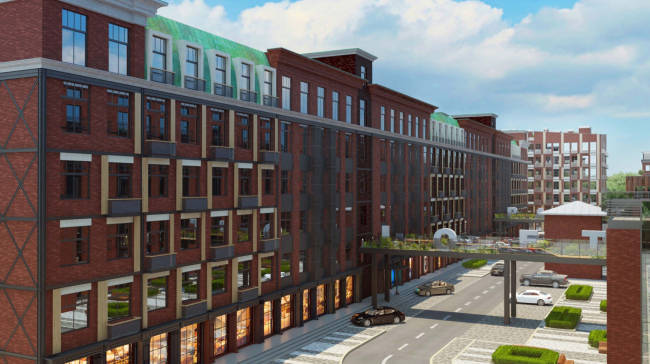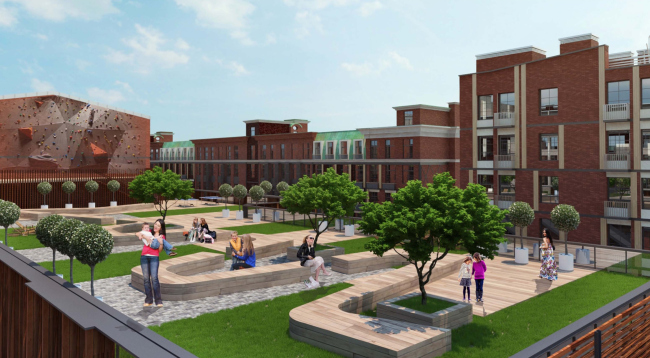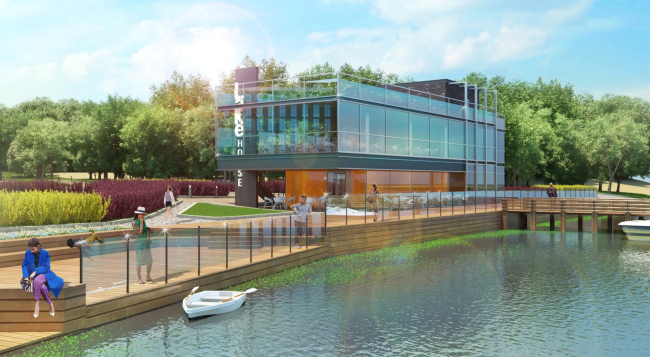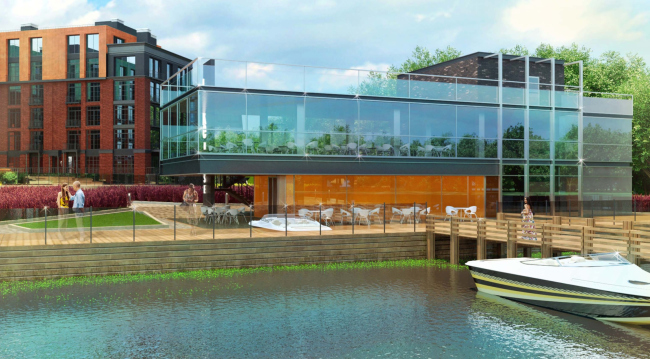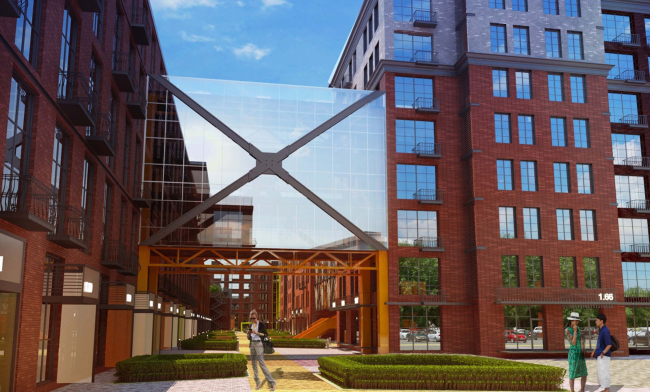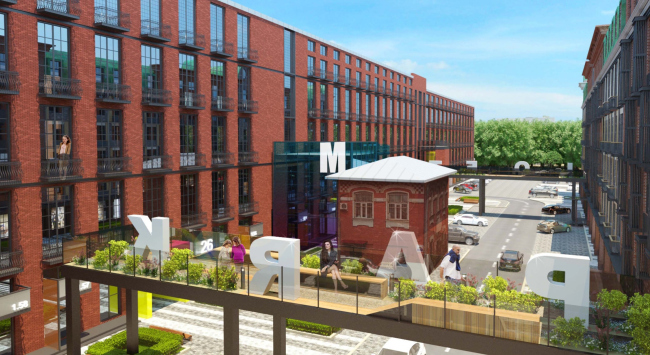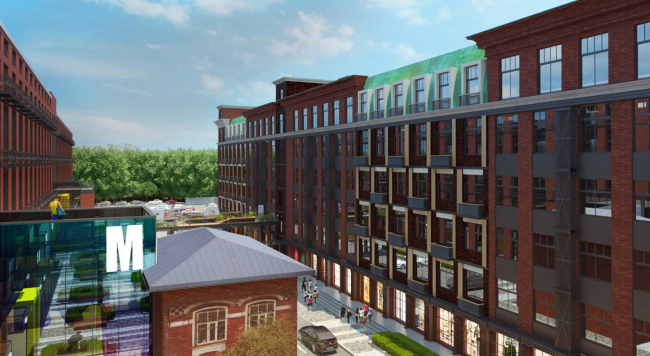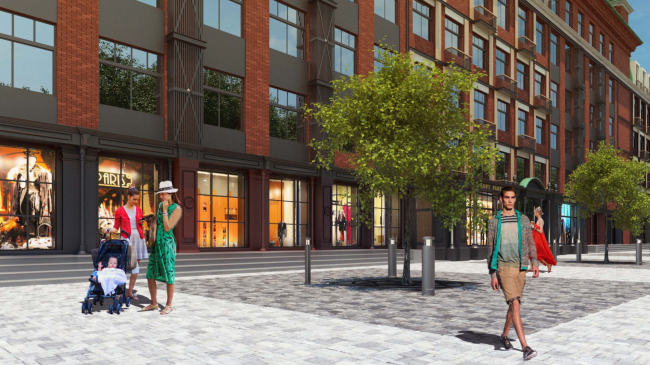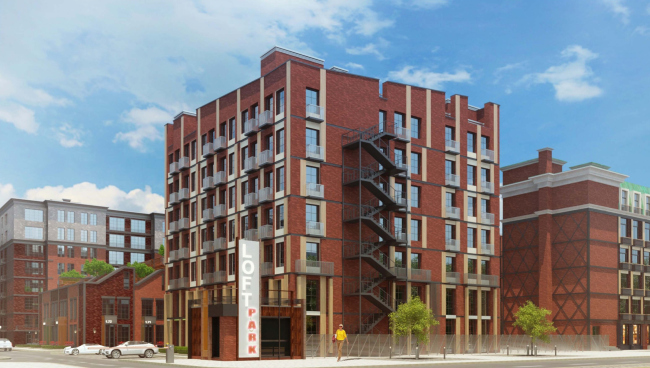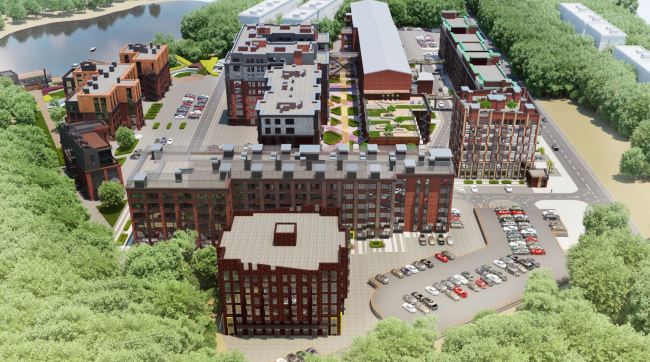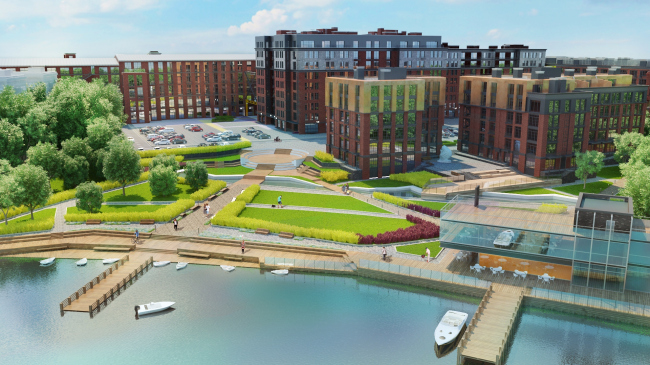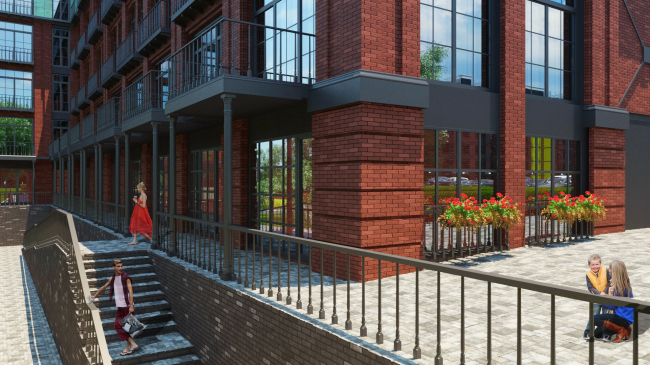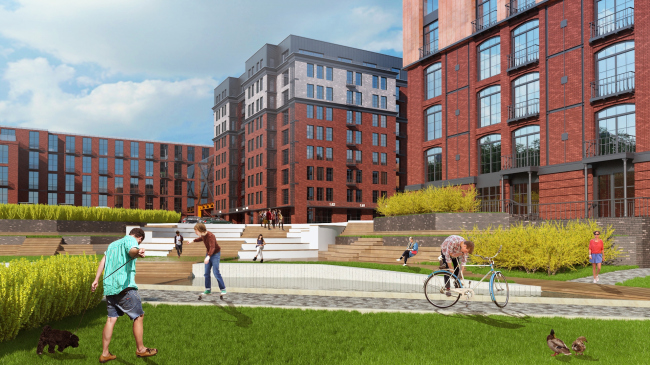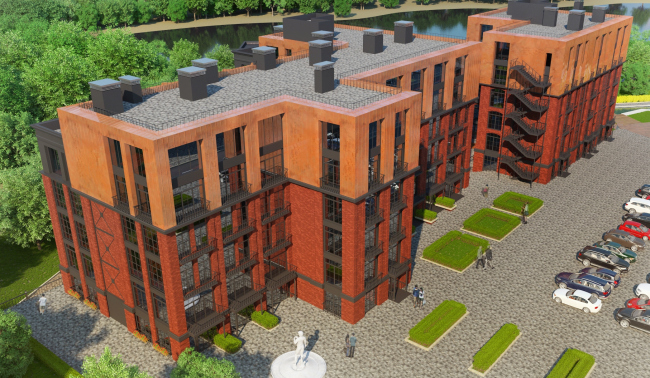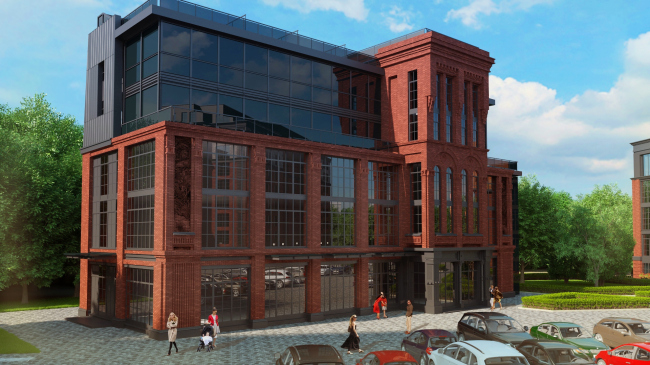|
On the north of Moscow, "Homeland Group" is designing the apart-complex "Loft Park" - an up-to-date city block in "loft" style, bordering on an oak park and the famous Golovinskiye Ponds.
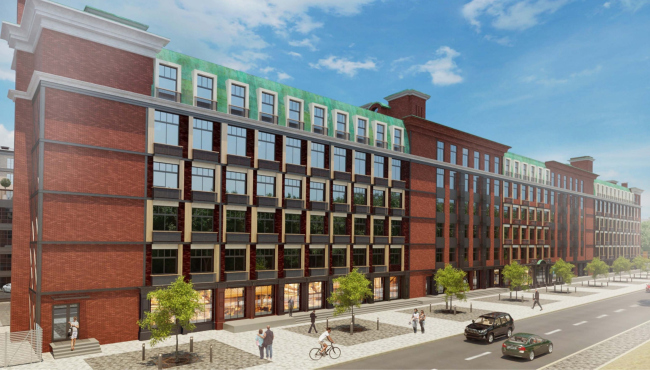
The new city block is
built on the spot of the former fine-cloth factory "Iokish" (in the
Soviet time, it was called "Moscow
fine-cloth factory named after Peter Alekseev), whose main building overlooks
the Mikhalkovskaya Street.
With a total area of more than 6 hectares, the production facilities occupied
the entire space between this street and the Maly Goloninsky Pond, immediately
neighboring on the large park. Actually, it was for the better part, the
immediate surroundings of the factory that led to its conversion: it will be
easier on the natural complex if the production is withdrawn from here, and,
for the future housing project, such a location is definitely an asset. At the
same time, the industrial past of this land site lead the commissioner to the
idea of creating a residential complex in the style of "loft" that is
much in style nowadays. 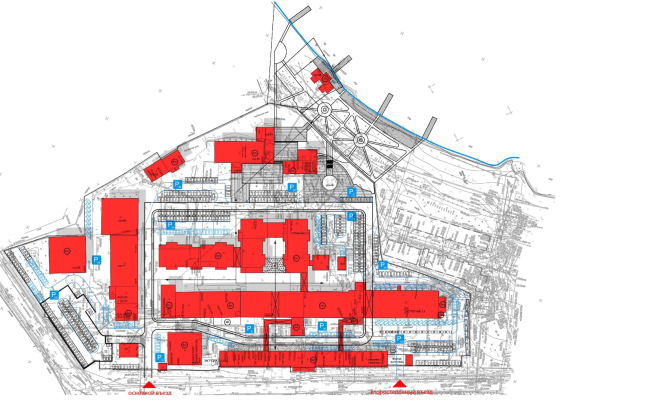
The face of the new city block will be the long Building 1 that
stretches along the Mikhalkovskaya
Street. Today, this is a rather bleak bearing-wall
affair of the 1960's that "Homeland Group" is turning into a building
sporting a dramatic multi-dimensional facade. Using the clinker brick as their
main cladding material, the architects supplement it with metallic and rock
inserts combining them in orders and thereby giving individuality to the window
apertures of each floor. The attic floor is at the same time accentuated with a
facing of patinated copper, while the brick partitions are bound metallic bars.
The palette of textures and materials set by this building is used in this or
that respect in all the design solutions of all the other buildings of
"Loft Park", even though the authors never repeat themselves
directly, designing new "clothes" for each one of them. We will also
note here that, while the first floor of the building is completely occupied by
the public functions and consists in fact of wide showcases turned onto the
Mikhalkovskaya Street, the first floors of all the other buildings are
residential and the very "on the ground" location of the apartments
is used by the architects for providing separate entrance hallways and improved
adjoining areas. 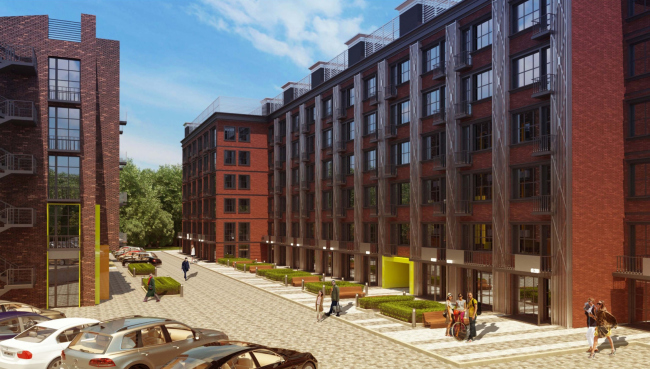
Totally, Loft
Park will consist of 9
residential buildings - as is often the case, though, not all of them are the
true monuments of the industrial architecture. The 150-year-old factory was
many times rebuilt, and up to the day of the current reconstruction only one
building has survived, that is recognized as a particularly valuable one - the
so-called "Building 2.1", situated on the second housing line
parallel to the Mikhailovskaya
Street. And, while the large part of the volumes
the architects actually build anew, preserving their original “shop” planning
and appearance, this building get special treatment from "Homeland
Group" - they carefully restore it, cleansing and refurbishing the original
bricks, keeping the existing window apertures and the main inside structures. 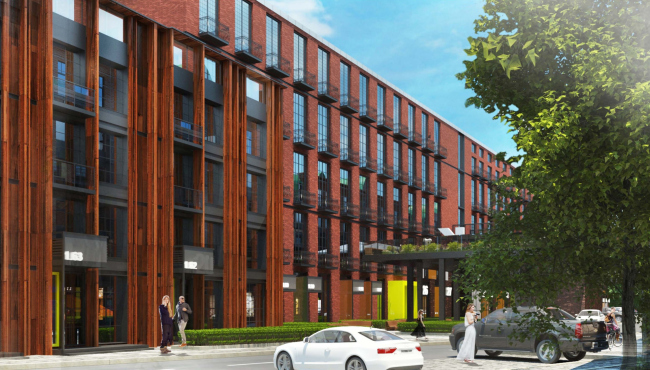
In fact, the only radical change that is introduced
here is the neat balconies for the air conditioners that the architects design
as narrow as possible and execute from black metal so as to minimize their
presence on the red-brick facade. The authors take a little more liberty when
handling the later-on annex to this building: its facades are supplemented with
vertical fracturing that is made by virtue of using the wooden pillars of various
sections, while the roof gets landscaped and improved so as to become one of
the main public spaces of this new
city block. Besides the recreational spots that of a
rather traditional kind, such as benches and playgrounds, there will also be a
rock-climbing wall here - it will be made out of a historical building's
firewall that adjoins the habitable roof. 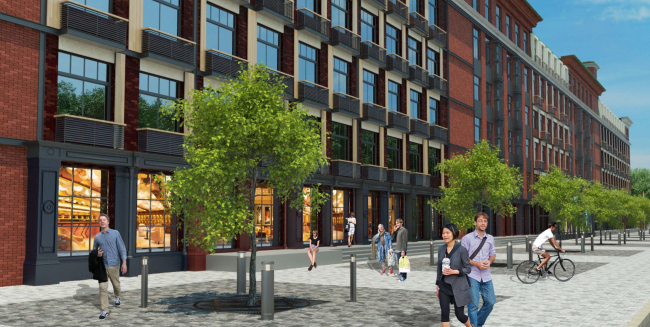
Yet another element of the factory that is kept
completely intact is the boiling house, together with its chimney. In the
project of "Loft
Park" it becomes not
only a significant landmark but also the place where the business activity of
the block will be centered about - around it, the architects build a hanging
block of offices. 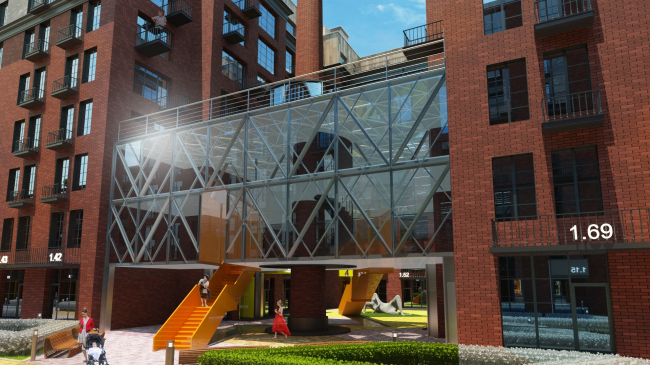
Also, in a rather unconventional way some blind side
walls of the former factory buildings are used: for example, the street-facing
side wall of Building 11-12 is covered with an image of Albrecht Dürer mural
painting which is reproduced by screen printing on glass panels. When asked,
why Dürer was specifically chosen for that image, the architects smile and
answer that, the way they see it, his paintings perfectly match the
"loft" aesthetic. 
The green area that is raised
above the ground is by no means Loft
Park's only park. The
architects were very keen to ensure that its territory should not look like a
prison cell, surrounded by a park. On the contrary, the concept of improvement
is built on the idea that it looks like the natural complex casts its green
protuberances into Loft
Park. The main ones of
them are the improved area of the pond banks with the fully-glazed volume of
the restaurant and the central pedestrian promenade (it is this particular
building that gets an extra "dimension" from the landscaped roof) -
however, between all the nine buildings the architects make green chains at
least one tree wide. The place for planting trees and tall shrubs was found on
yet another roof - one that covers the square-layout Building 6 whose facade
overlooks the Mikhailovskaya Street - as well as at the wide open gallery that
connects, at the second floor level, the longest buildings of the complex. 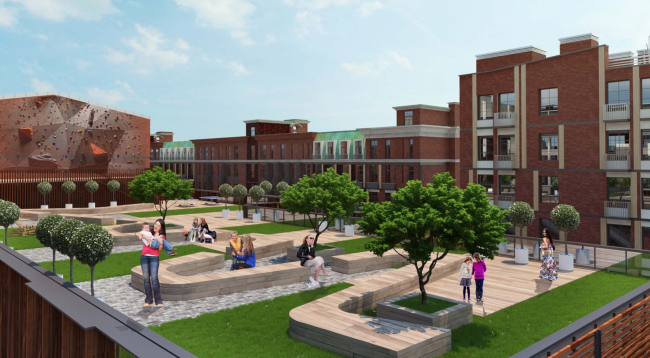
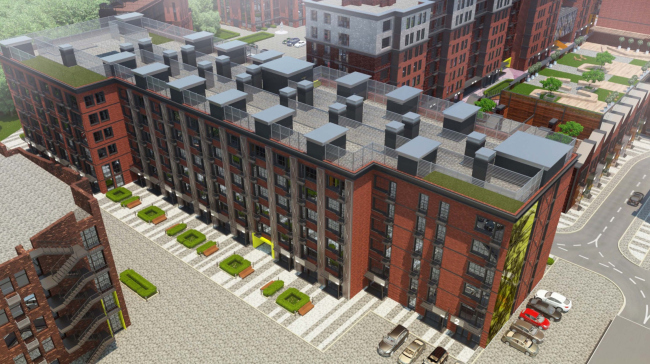
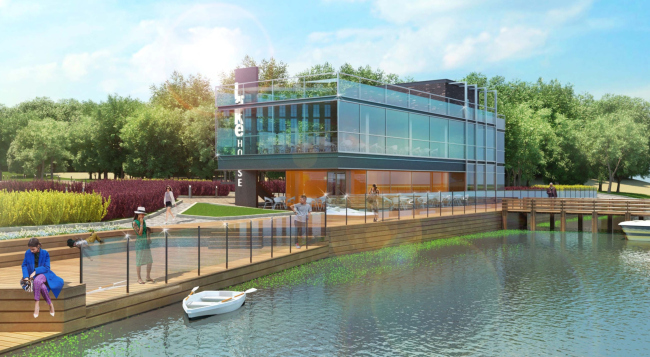
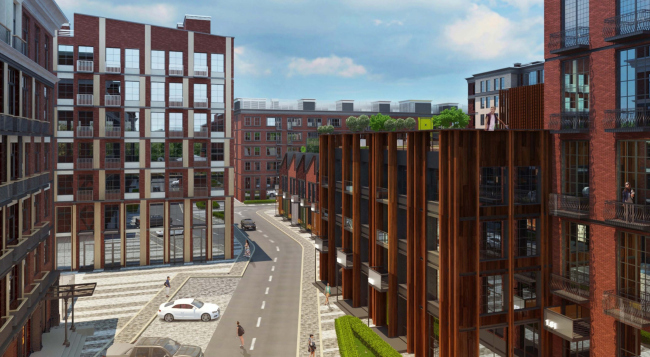
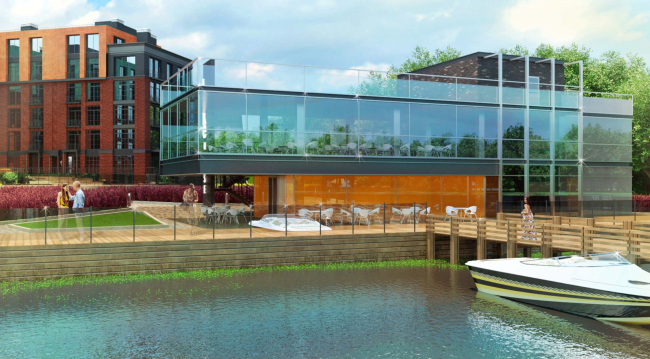
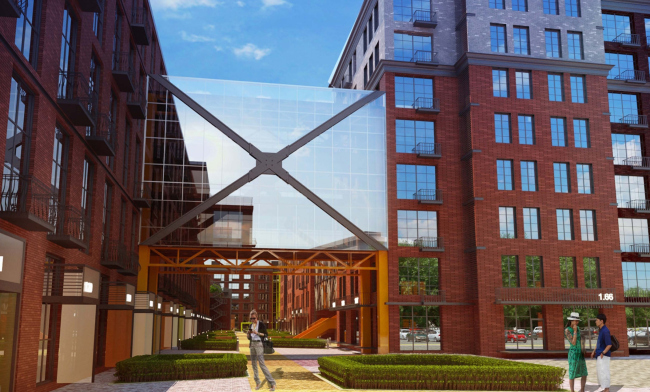
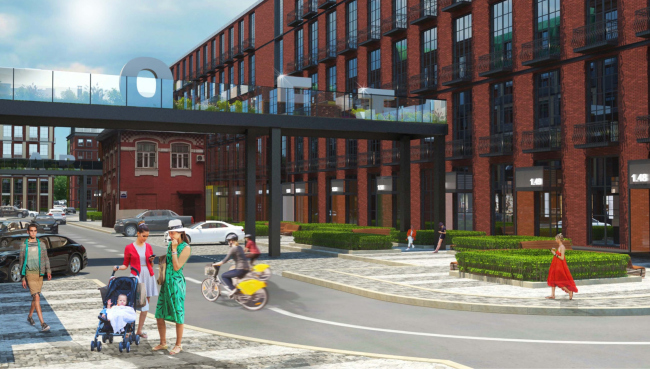
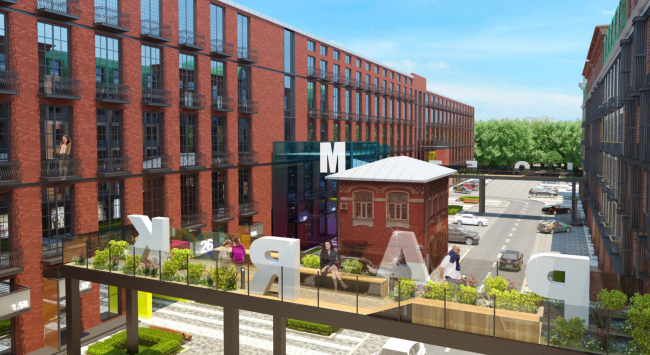
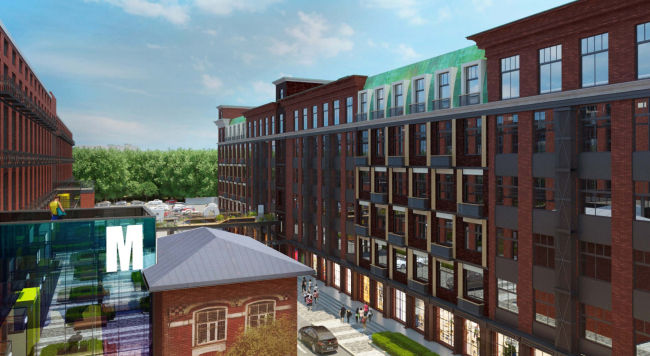
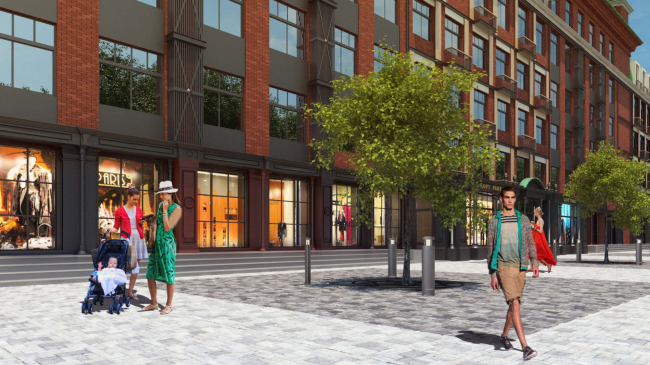
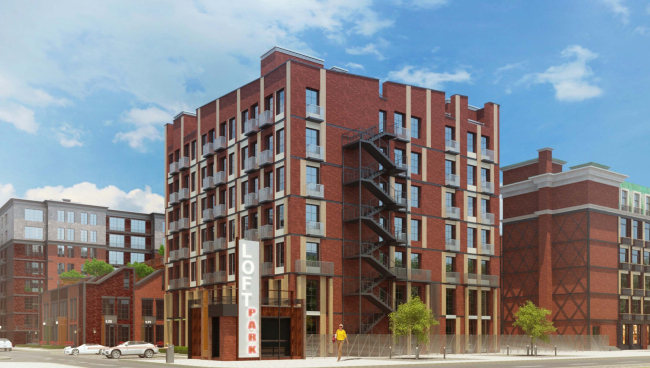
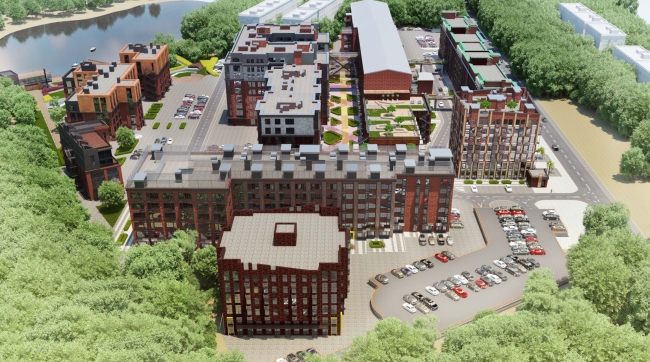

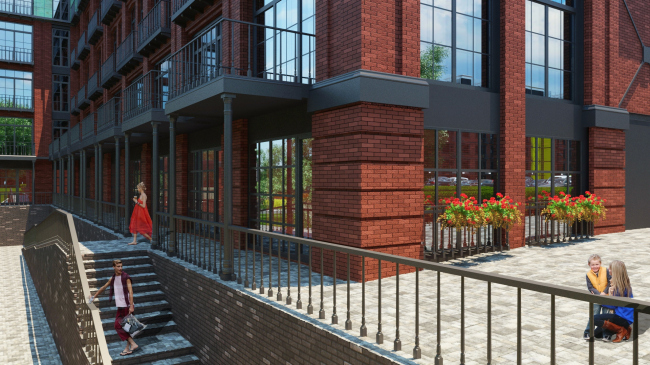
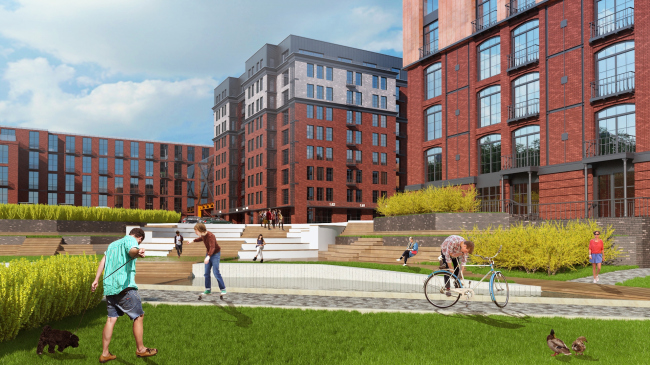
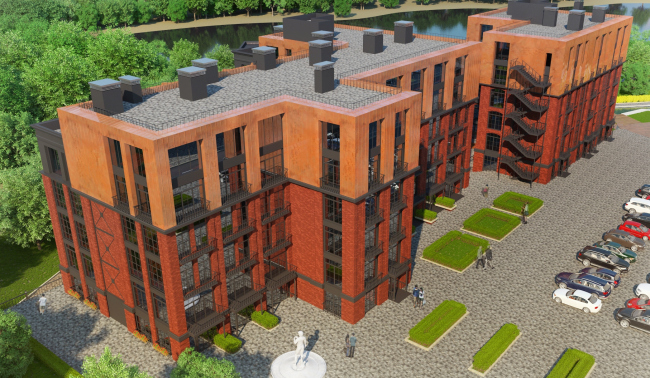
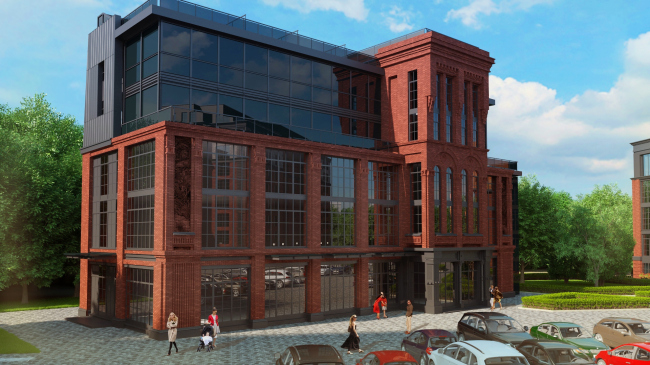
None
None
None
None
None
None
None
None
None
None
None
None
None
None
None
None
None
None
None
None
None
None
None
None
|

























